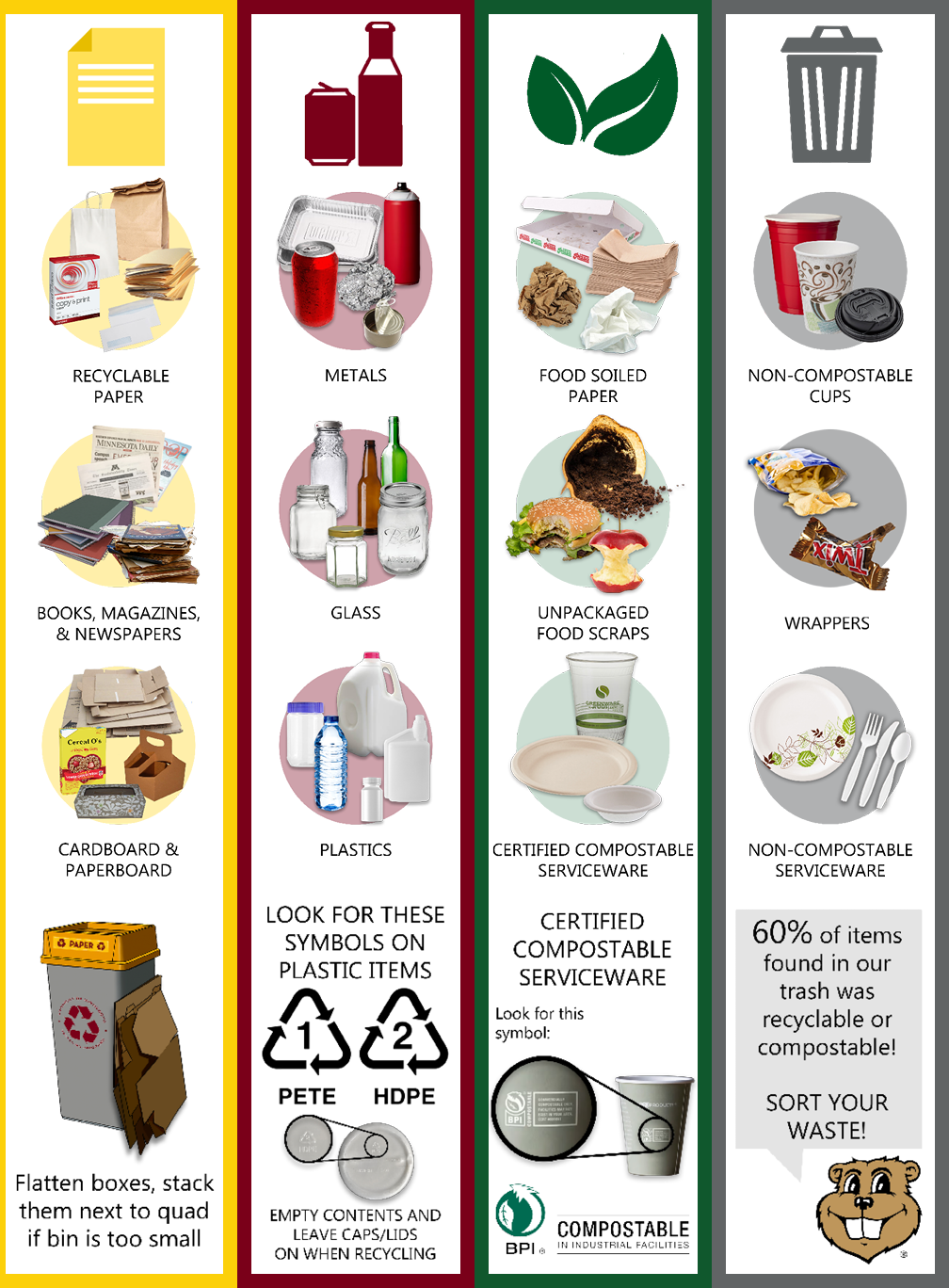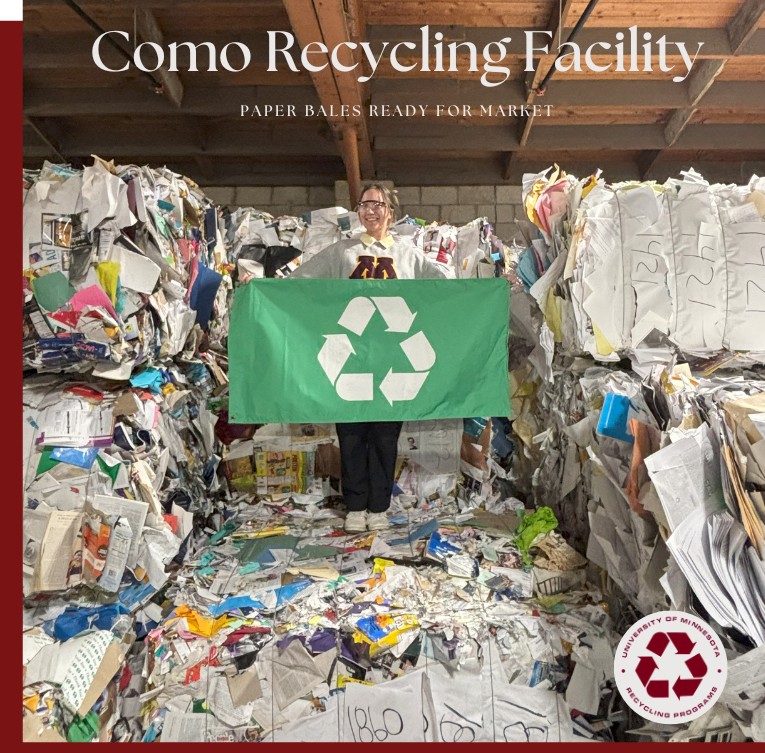The University of Minnesota Twin Cities proudly hosts one of the nation's top university recycling programs, made possible by the collective efforts and individual action. Discover how you can make a significant impact in our environment every day.
The University Recycling System
All University community members - faculty, staff, students and visitors - have a vital role in recycling on campus. Check out the recycling video below where Goldy Gopher shows us what belongs in each waste stream.
The University Recycling System
Waste is collected into four distinct streams: paper, cans & bottles, compost, and trash. Using various recycling bins help maintain material quality which is hand sorted at the campus operated Como Recycling Facility. As a result, recycling can be sold into local Midwest markets, contributing to the circularity of our university waste.


- Paper: Printer paper, notebooks, magazines, newspapers, cardboard, and books
- Cans Bottles: Aluminum cans, plastic bottles, plastic jars, glass bottles, and glass jars
- Compost: Food scraps (fruits, veggies, nuts, meat, dairy products, and coffee grounds) napkins, paper towels and greasy pizza boxes free from plastic sauce cups or tables. Certified compostable products with the BPI logo or the word "compostable."
- Trash: Plastic or foil-lined wrappers (chip bags, tea packets, oatmeal packets, candy wrappers), Styrofoam & packing peanuts, stickers, single use servicewear unless certified compostable (coffee cups, silverware, plates).

Collection
Within 285 active buildings across campus, waste stations are standardized to ensure equal access to recycling for the 50,000 individuals on campus. Whether it's composting, recycling, or reuse, every person holds the privilege to make sustainable choices. This collective effort results in diverting 4 million pounds of waste each year, which is equivalent to the weight of 2,000 elephants.
FM Custodial Services collect and transport recycling, compost, and trash to loading docks, where FM Waste Recovery Services picks up and transports the material to their designated locations.
At the campus-operated Como Recycling Facility, recycling from Paper and Cans & Bottles undergo careful processing. Paper is sorted into various categories including printer paper, cardboard, boxboard, magazines, and reusable items like notebooks. Cans & Bottles are separated into glass, metal, and different grades of plastic such as PET, HDPE, or Polypropylene. Meanwhile, additional processing is conducted to increase the quality of our recycling, such as removing plastic wrappings from paper or removing liquids from beverage containers to enhance the quality of our recycling. If materials can not be sorted into paper, plastic, glass or metal they are compost, reused or trashed.

Unlike traditional recycling facilities, known as Material Recovery Facility’s (MRF), upwards of 95% of materials processed at the Como Recycling Facility end up being recycled or reused.
What about compost? Compost collected from campus, dining halls, and research facilities are transported to the Shakopee Mdewakanton Sioux Community (SMSC) Organics Facility, a commercial compost facility in Shakopee. Learn more about composting at UMNTC.
What about trash? Materials that can not be reused or recycled are transported to the Hennepin Energy Recovery Center (HERC) in Minneapolis. Learn more about waste disposal at UMNTC.
Campus Initiatives
In 2017, the University Senate Resolution supported campus-wide centralized and compost collection. Centralized collection requires individuals to bring their waste, recyclables, and compost to “centralized” containers. This process increases the amount of recycling collected. Waste studies conducted at the University show that centralized collection can yield up to 80% recycling rates for targeted material. As an added bonus, the university saves money on staff labor and reduces the cost to dispose of waste.
In addition, centralized collection paved the way for composting at central waste stations in public spaces on campus. Learn more about UMN compost recycling.
Over the last five years the University of Minnesota has recycled or composted 53% of its waste with an ambitious goal of achieving 90%. Learn more about UMNTC’s campus diversion.
Despite our emphasis on recycling, we encourage waste reduction at the source, promoting sustainable practices such as opting for reusable items over disposables and promoting zero waste initiatives.
